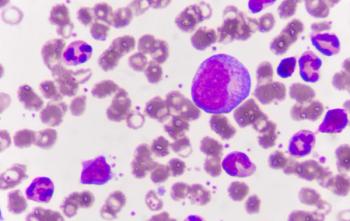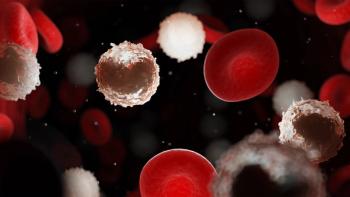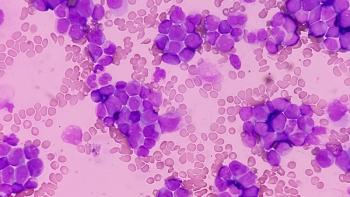
FDA Approves Rituximab Plus Chemotherapy for Children With Select Previously Untreated Lymphoma, Leukemia
The FDA has approved the combination of rituximab plus chemotherapy to treat children aged between 6 months and 18 years who have advanced-stage, CD20-positive diffuse large B-cell lymphoma (DLBCL), Burkitt lymphoma (BL), Burkitt-like lymphoma (BLL), or mature B-cell acute leukemia (B-AL).
The FDA has approved rituximab (Rituxan) plus chemotherapy on the indication of previously untreated, advanced-stage, CD20-positive diffuse large B-cell lymphoma (DLBCL), Burkitt lymphoma (BL), Burkitt-like lymphoma (BLL), or mature B-cell acute leukemia (B-AL) in children older between 6 months and 18 years of age.
The regulatory decision is supported by findings from a global multicenter, open-label, randomized, Inter-B-NHL Ritux 2010 trial (NCT01516580), which evaluated the efficacy of the regimen in CD2-positive DLBCL/BL/BLL/B-AL in this patient population.
A total of 328 patients were randomized to receive either Lymphome Malin B (LMB) chemotherapy (corticosteroids, vincristine, cyclophosphamide, high-dose methotrexate, cytarabine, doxorubicin, etoposide, and triple drug–methotrexate/cytarabine/corticosteroid intrathecal therapy) as a monotherapy or in combination with rituximab or a non-US licensed rituximab. The experimental agent was infused intravenously (IV) at a dose of 375-mg/m2 across 6 infusions. Two doses were administered during each of the induction courses and 1 during each of the 2 consolidation courses, in accordance with the LMB scheme.
The trial’s main findings demonstrated that there were 28 event-free survival (EFS) events among the patients in the LMB arm and 10 in the rituximab-LMB group (HR, 0.32; 90% CI: 0.17, 0.58; P=.0012) at a follow-up of 3.1 years. EFS was defined as progressive disease, relapse, second malignancy, death from any cause, or non-response as demonstrated by evidence of viable cells in residue following the second cytarabine [Aracytine, Ara-C], veposide [VP16 (CYVE) course, whichever occurred first.
At the time of the interim analysis, 20 deaths had occurred in the LMB cohort, compared with 8 in the LMB-rituximab cohort. The estimated overall survival HR was 0.36 (95% CI, 0.16-0.81). There has not yet been a formal statistical test to determine overall survival and the OS is considered descriptive. Following the interim analysis, randomization was discontinued, and an additional 122 patients received rituximab in addition to LMB.
The following adverse events (AEs) of grade 3 or higher were observed among more than 15% of patients: febrile neutropenia, stomatitis, enteritis, sepsis, increased alanine aminotransferase, and hypokalemia. Grade 3 AEs that were more prevalent among patients receiving rituximab included sepsis, stomatitis, and enteritis. Fatal AEs occurred in less than 2% of the patients in both treatment arms.
The advised dose for rituximab is 375 mg/m2 as an IV infusion in combination with systemic LMB chemotherapy. A total of 6 infusions should be given, 2 during each of the induction courses, cyclophosphamide (COPDAM1), vincristine (Oncovin), prednisolone, doxorubicin (Adriamycin), methotrexate, and 1 dose during each of the 2 consolidation courses of cytarabine, methotrexate and CYVE.
Reference
- FDA approves rituximab plus chemotherapy for pediatric cancer indications. News release. FDA; December 2, 2021. Accessed December 2, 2021. https://bit.ly/3djDAGe
Newsletter
Knowledge is power. Don’t miss the most recent breakthroughs in cancer care.
















































































